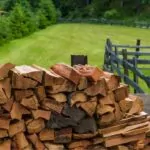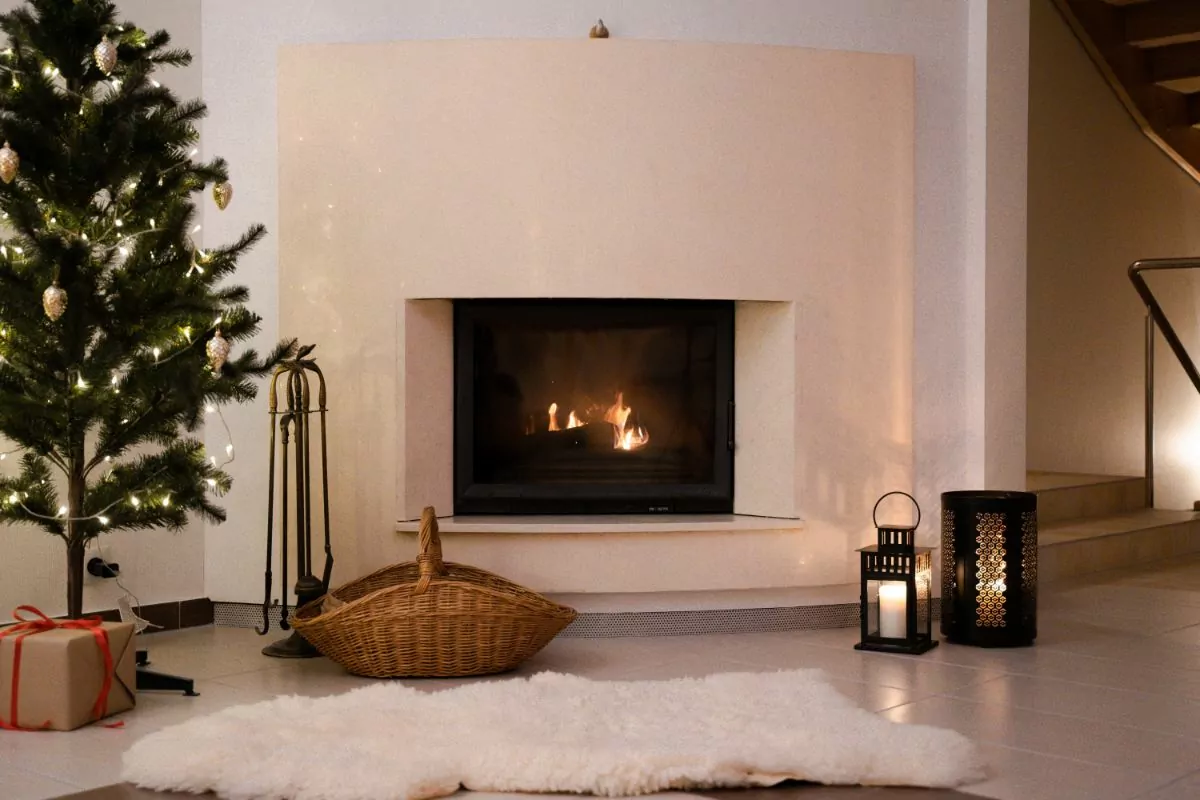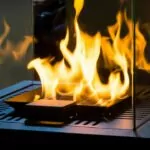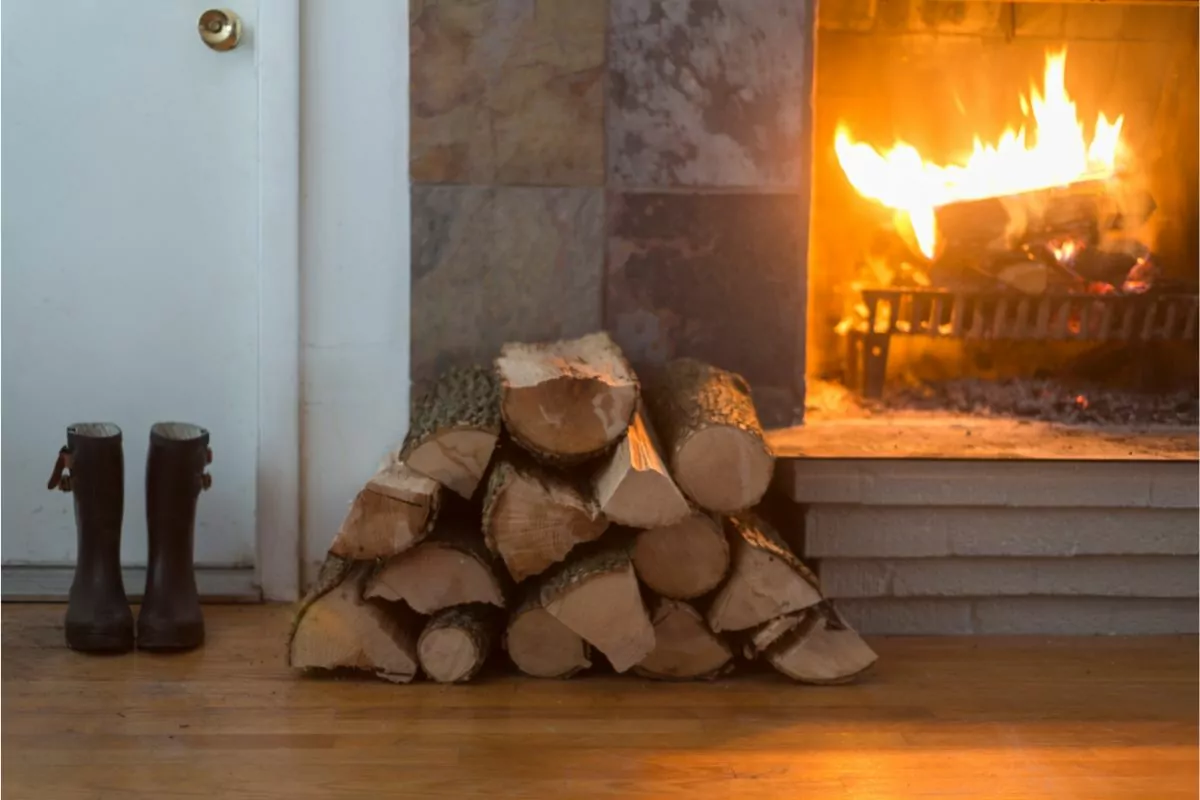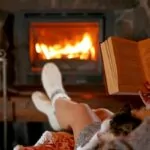Fireplaces are a fantastic way to give your home character and atmosphere.
Charcoal is a naturally occurring substance and is created when organic material burns partially. It is generally used to cook outdoors on grills and barbecues.
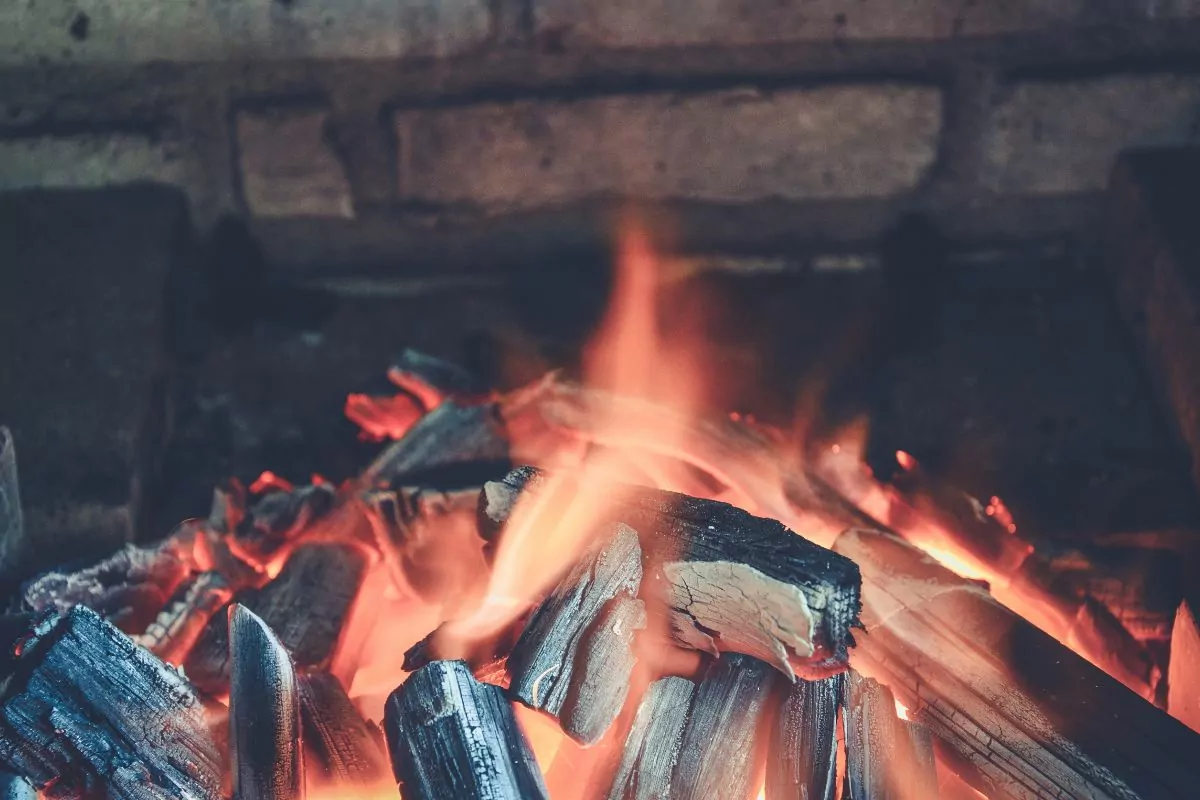
You might well have read that charcoal can be effectively utilized as fuel for fireplaces too. But is this actually true? The answer is unfortunately no, unless your fireplace is situated outside.
This is because charcoal will cause the chimney to clog and the air to become contaminated, therefore – charcoal can’t be burned in the fireplace unless precautions are taken.
Because they emit more poisonous gasses and are more difficult to put out, charcoal fires can be a little risky.
In the absence of a particular apparatus that permits air to pass through the flames while catching soot, charcoal shouldn’t be burnt in a fireplace.
For these reasons, we would suggest not using charcoal to fuel your indoor fireplace. However, if you have an outdoor fireplace – charcoal can be a great way to fuel your fire.
This article will discuss the ins and outs of burning charcoal in a fireplace; including charcoal’s benefits as a fuel, why you can’t really burn it inside, and how you can use charcoal in certain situations.
Why Isn’t Charcoal Really Acceptable For Indoor Fireplace Fuel?
Using charcoal in your fireplace can be a bad idea.
The charcoal’s smoke will create a lot of foul-smelling, toxic air, which can be unhealthy and can increase the risk of carbon monoxide poisoning.
Additionally, using charcoal as fuel may cause your chimney to become clogged.
Can You Use Charcoal Safely?
Despite being perfect for an outdoor BBQ, charcoal products shouldn’t be used in indoor fireplaces.
This is due to the carbon monoxide that is released when charcoal burns. If you’re outside in your backyard, this won’t be a problem, but indoors, it’s really dangerous.
Therefore, avoid doing it unless you want to suffer from carbon monoxide poisoning.
Because the charcoal won’t provide enough heat, your chimney won’t draught properly, allowing combustion byproducts to get into your home.
Since CO has no color or borders, you won’t be able to recognize it if it accumulates.
Therefore, if you plan to use charcoal in a fireplace – make sure your fireplace is situated outdoors! If you have an outdoor fireplace, you can use charcoal as fuel safely.
Why Should You Choose Wood Pellets And Pellet Fuel Instead Of Charcoal In Your Fireplace?

It Benefits The Environment
Carbon monoxide as well as other harmful gasses are released into the air when charcoal is burned in a fireplace.
Compressed sawdust is used to make wood pellets, which is less harmful to the environment than using charcoal.
Ash (see also ‘What To Do With Fireplace Ashes‘) from burned wood pellets can be safely disposed of in your garden or compost bin. Charcoal burning produces dangerous compounds and carcinogens.
Better Safety
Because charcoal burns at a greater temperature than wood fuel does in a fireplace, it generates more sparks and embers.
When burned indoors, charcoal also needs less ventilation, which makes it riskier due to a higher chance of poisoning from carbon monoxide.
Since they burn at a cooler temperature and need more air when used in a fireplace, generate smaller flames and take longer to burn, wood pellets are safer.
It Costs Less
The cost of charcoal is higher than the cost of burning wood pellets or other types of pellet fuel.
Wood pellets are less costly than charcoal and create less ash when burned in a fireplace, whether you buy them or make them yourself.
It Is Cleaner
In comparison to burning wood pellets, charcoal produces more soot buildup, which can be particularly challenging to remove from the fireplace walls and flue pipe.
Additionally, burning wood pellets generates less ash than using charcoal, making it simpler to clear your chimney after usage.
Benefits Of An Outdoor Charcoal Fireplace
It will be simpler to use the fireplace. It will also be easier to maintain the fire because you won’t have to open your damper as frequently to add fuel and get rid of the ashes.
If you don’t have any kindling handy, it is simpler to create a fire using charcoal compared to using wood.
When you desire a warm fire but are unable to purchase some kindling prior to leaving home in the morning, using charcoal could save you effort and time.
Smoke odor won’t emanate from the chimney. Charcoal is your best bet if you’re worried about the smoke smell.
Since you won’t require a source of kindling without a chimney starter, using the fireplace will be much more straightforward.
When the coals are sufficiently hot to ignite on their own, just add charcoal, light it, and shut the damper.
How Long Should Charcoal Be Burned In A Fireplace?
Many variables will affect how long it takes to ignite charcoal in a fireplace. It depends on how many pieces you would like to burn simultaneously and how big the pieces are.
It will take longer as the components get bigger. Follow these steps:
- Fill the firebox with the charcoal.
- Hold a lit match or lighter against the charcoal until flames appear.
- Before introducing larger pieces, add a few small chunks to the firebox and let them burn for around 10 minutes.
Conclusion
For optimum safety, you should not use charcoal in an indoor fireplace due to the risk of carbon monoxide poisoning.
It is safe to use charcoal on a BBQ or outdoor fireplace, but using it in an enclosed environment can be dangerous.
Use a pellet fuel such as wood pellets or any natural fuel in place of charcoal. Wood burns slower and creates smaller flames, but this is what makes it safe for indoor use.
- Discover the Ease and Elegance of Zero-Clearance Fireplaces - July 24, 2023
- How to Build a Frame for an Electric Fireplace Insert: A Step-by-Step Guide - July 16, 2023
- Bedroom Fireplace Ideas That Will Make You Want to Snuggle Up - July 16, 2023

